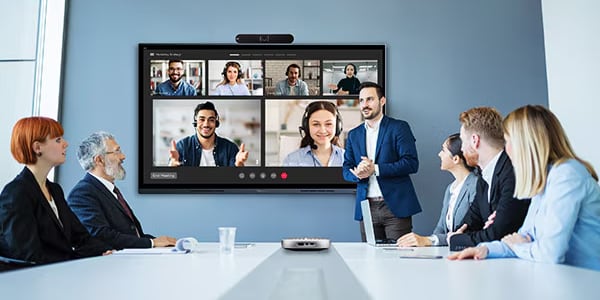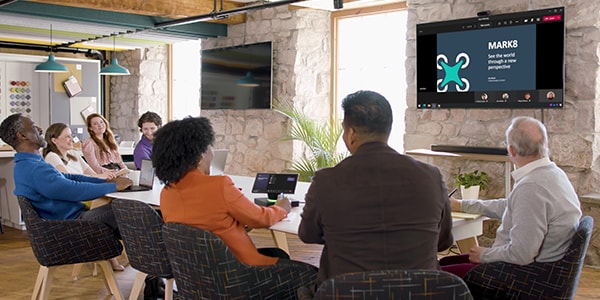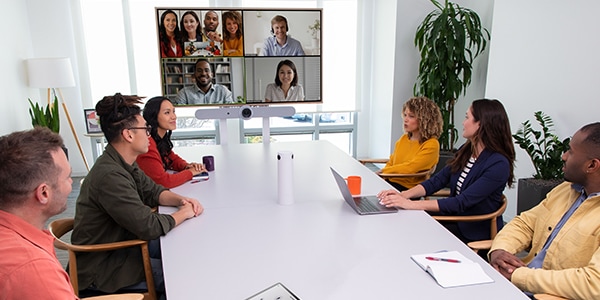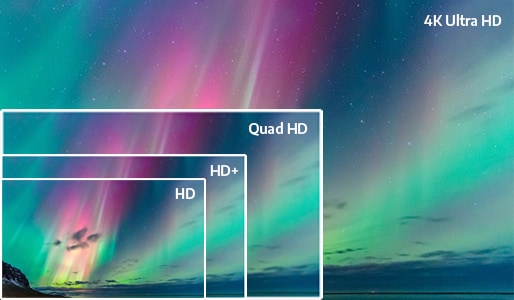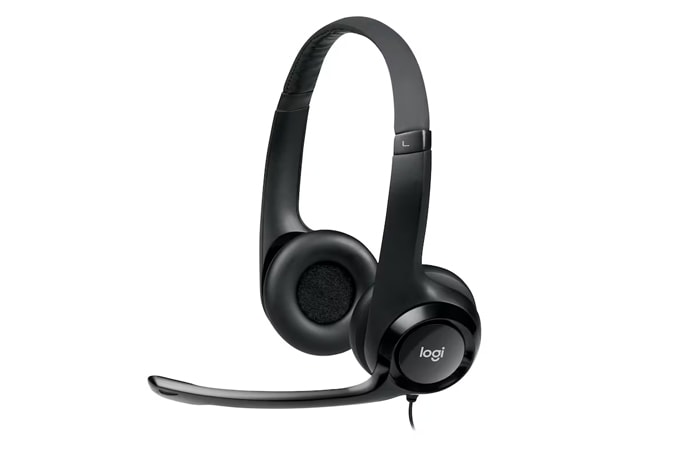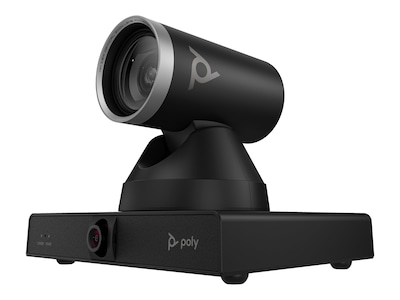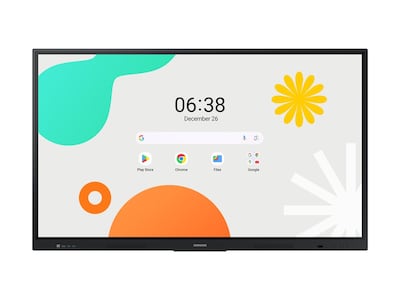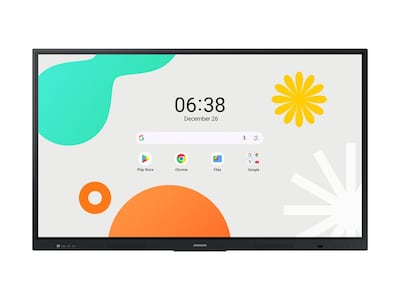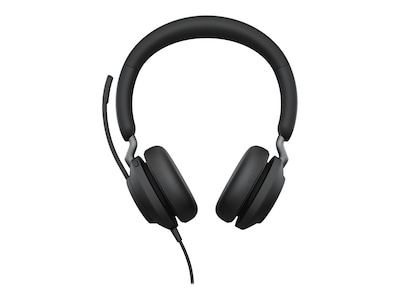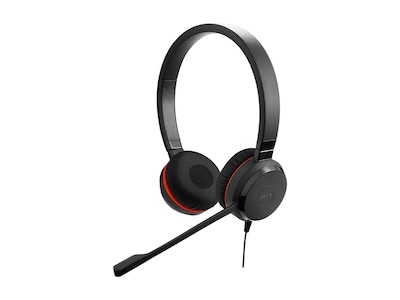This website stores cookies on your computer.
These cookies are used to collect information about how you interact with our website and allow us to remember you. We use this information in order to improve and customize your browsing experience and for analytics and metrics about our visitors both on this website and other media. To find out more about the cookies we use, see our Privacy Policy.
Lenovo Introduces its First Copilot+ PC Enabled Mobile Workstations
Hybrid Meeting Technology
Integrating technology for seamless collaboration between in-person and remote workforce

Hybrid meeting technology represents a comprehensive approach to facilitate effective communication and collaboration between in-person and remote workforce. Similar to conference room technology, hybrid meeting technology encompasses the integration of video conferencing technology, smart collaboration, network infrastructure solutions, and other advanced meeting technologies to create seamless meeting experiences from anywhere.
From selecting the right video conferencing technology to advanced hardware solutions including cameras, microphones, monitors, and projectors in the meeting room, hybrid meeting technology empowers teams to collaborate effectively regardless of their physical location.
Network connectivity and infrastructure is also crucial, including bandwidth, latency, and security considerations to support hybrid meetings with a reliable communication environment. By embracing hybrid meeting technology, organizations can optimize productivity with seamless communication and enhance flexibility in today’s dynamic work landscape.
From selecting the right video conferencing technology to advanced hardware solutions including cameras, microphones, monitors, and projectors in the meeting room, hybrid meeting technology empowers teams to collaborate effectively regardless of their physical location.
Network connectivity and infrastructure is also crucial, including bandwidth, latency, and security considerations to support hybrid meetings with a reliable communication environment. By embracing hybrid meeting technology, organizations can optimize productivity with seamless communication and enhance flexibility in today’s dynamic work landscape.
Featured Hybrid Meeting Technology Products
Smarter Hybrid Meetings in 2025: What’s New and How to Get Ready

More than half of the global workforce—55% of employees worldwide—are now engaged in a hybrid working pattern, splitting their time between home and the office. This shift has transformed hybrid meetings from a stopgap measure into a foundational element of modern work culture.
Challenges with Hybrid Meetings
However, this evolution brings new challenges. A significant number of remote participants report difficulties in fully engaging during hybrid meetings, often feeling overlooked compared to their in-office counterparts. These disparities can lead to decreased collaboration, lower productivity, and employee disengagement.How to Facilitate Seamless Collaboration in Hybrid Meetings
Organizations must adapt workflows, expectations, and technologies to support equitable experiences for all participants, regardless of location. New advancements in meeting technology are making this possible. From AI-powered automation and smart cameras that improve speaker visibility, to intelligent collaboration tools and built-in security features, these innovations are helping close the engagement gap and create more inclusive, productive hybrid meetings.1. AI-driven Automation Saves Time and Improves the Meeting Experience
AI can play a critical role in reducing meeting overload, improving efficiency, and delivering more personalized and actionable meeting experiences. It also helps save time. According to a recent Zoom report, most AI users (91% of leaders and 67% of employees) say it saves them 30 minutes or more a day.Before the meeting, AI can analyze calendars, time zones, and meeting preferences to automatically suggest optimal times and even generate agendas based on email threads or project management tools. As soon as the meeting starts, AI-powered platforms handle real-time transcription, translate content across languages, and highlight action items as they are discussed, ensuring no detail slips through the cracks.
After the meeting, these tools generate smart summaries, track follow-up tasks, and integrate with collaboration platforms like Microsoft Teams or Slack to keep momentum going. This end-to-end automation reduces the manual effort typically required to coordinate and capture meetings, allowing teams to focus on meaningful work instead of logistics.
2. Smart Collaboration Tools for An Equitable Experience
According to Barco, 35% of employees struggle to fully engage in hybrid meetings, often due to poor AV setups or lack of access to shared content. Smart collaboration tools are helping close this gap, turning passive viewing into active participation.Digital whiteboards and shared canvases allow distributed teams to brainstorm and contribute ideas in real time. Features like multiuser coediting—embedded in platforms like Zoom and Microsoft Teams—enable seamless collaboration during calls. In-room interactive displays and screensharing tools ensure virtual participants can engage with the same content as those onsite.
Video hardware is also advancing, with AI-powered cameras that automatically frame speakers and capture multiple angles, and advanced microphones that isolate voices from background noise, creating a clearer, more inclusive experience for all.
3. Enhanced Security and Privacy for Hybrid Environments
As hybrid meetings become standard, so do the risks—from unauthorized access to data leaks and phishing attempts. The expanded digital footprint of remote collaboration demands stronger security and privacy measures.To meet this challenge, videoconferencing platforms are adopting end-to-end encryption (E2EE) by default and integrating AI-powered threat detection to flag suspicious activity, such as uninvited participants or unauthorized screen sharing. Access controls are also improving, with tools like multifactor authentication (MFA), role-based permissions, and single sign on (SSO) helping ensure only authorized users can join meetings.
In addition, with rising compliance demands—from GDPR and HIPAA to SOC 2 and ISO/IEC 27001—organizations must prioritize secure communication and data handling. In response, vendors are offering admin controls, audit logs, and data residency options tailored to regulatory needs.
4. The Rise of Context-aware, Adaptive Meeting Spaces
As organizations adapt to a hybrid future, rethinking room design and building operations is just as important as upgrading software. Creating spaces that are as smart as your tech stack ensures your hybrid strategy is built for resilience and efficiency, not just connectivity.New context-aware technologies—like AI-enabled cameras, IoT sensors, and occupancy-aware controls—help transform static rooms into responsive, energy-efficient spaces. These systems adjust lighting, temperature, and equipment based on usage, improving both user comfort and sustainability.
The benefits go beyond convenience. According to a PwC and the World Economic Forum report, adopting smart energy systems (like AI-controlled lighting and HVAC) could cut global energy use by up to 31%, with $2 trillion in annual savings.
5. Platform Interoperability and Ecosystem Integration
With most organizations using a mix of collaboration tools—Teams, Zoom, Google Meet, Webex, and Slack—ensuring a consistent meeting experience across platforms has become a major challenge. But interoperability is essential for seamless hybrid collaboration.To solve this challenge, unified communications platforms are increasingly cross-compatible. Teams Rooms hardware can join Zoom or Webex meetings with one tap, and USB-C or wireless casting lets employees connect any device to any room system. Open APIs and modular AV systems enable deeper integration with calendars, booking tools, CRMs, and project software, reducing app switching and streamlining workflows.
Building with flexibility in mind reduces friction, eases IT support, and ensures users can collaborate smoothly, no matter the platform or device.
Staying Ahead: How IT Leaders Can Prepare
As hybrid meeting tech rapidly evolves, IT and workplace leaders must proactively guide their organizations toward more flexible, future-ready collaboration, which means planning for continuous transformation. Start by auditing your current meeting setup to identify gaps:- What tools are in use?
- Are rooms equipped for hybrid?
- Where are the friction points?
Embracing the Future of Hybrid Meetings
For IT leaders and workplace strategists, the message is clear: staying ahead means planning ahead. By investing in the right tools, rethinking space design, and aligning technology with employee needs, organizations can create inclusive meetings that drive real collaboration and long-term success—even in hybrid work environments.Video Conferencing and Smart Collaboration
Audio and Video Conferencing Solutions
Whether companies are updating conference rooms or enhancing meeting experience for their hybrid workforce, all meeting spaces are evolving to become more user-friendly and efficient for productivity. With over a decade of experience, we are here to help your modern workforce create a bridge to the divide between in-person and virtual meetings.

Advanced Video Collaboration for Every Workspace
Work Together with Logitech
With dramatic changes in how and where people work—and immediate needs for dispersed teams to collaborate effectively from anywhere—video conferencing has become a business imperative. Logitech provides affordable solutions that bring the power of video to every workspace.Flexible Hybrid Conferencing Guide
Optimizing the Hybrid Workforce with Legrand
Setting up the flexible conference room provides the superior user experience for your hybrid workforce. Conference calls should be amazing whether you’re in the office or working remotely. Legrand’s transformative hybrid conferencing solutions elevate the conferencing experience for all shapes and sizes, such as multiple cameras for a full video experience.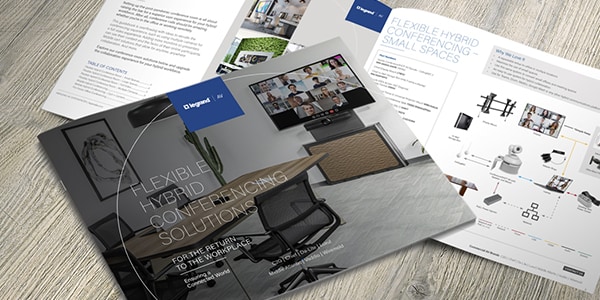
ViewSonic Conference Room Solutions
ViewSonic® TeamJoin™ Microsoft Teams Rooms solution bundles enhance communication, foster collaboration, and promote inclusivity among diverse teams, regardless of their locations. With options including a computer system, touch console and conference camera, our Microsoft Teams Rooms bundles offer a complete, one-stop solution that can easily scale based on your needs and meeting space size.Move on to Lenovo Smart Collaboration
Make the Meeting Matter. Not the Location.
Most of us regularly take part in hybrid meetings, where one or more people connect remotely. It’s quickly become a part of everyday life. Lenovo Smart Collaboration takes the hassle out of hybrid meetings.- Wide range of solutions for different working spaces
- Cost-effective options that drive instant results
- Easier management and simplified deployment
- Superior security with long-term support

New Collaboration Tools Raise Productivity to the Next Level
To maximize productivity, enterprises need to foster better real-time collaboration between widely dispersed teams and stakeholders. New collaboration tools leverage the advances in display and networking technologies to boost the effectiveness of business meetings by providing interactive and videoconferencing experiences that ensure participants remain engaged and focused on the collaboration rather than on the tools.Logitech Sight
Empower Hybrid Meeting Experience from Multiple Angels
Help remote employees get the best perspective in every hybrid meeting with Logitech Sight. This AI-powered tabletop camera works hand in hand with Logitech Rally Bar or Rally Bar Mini to capture, identify, and present virtual attendees with the best sound and view of the meeting room action.
Zone Wireless 2
Upgrade Your Hybrid Collaboration with Noise-Free Calls
In today’s hybrid work environments, individuals work from a variety of spaces, and noise or poor sound quality can negatively affect collaboration and productivity. Meet Zone Wireless 2—the AI-powered wireless headset for two-way noise-free calls helps you hear and be heard clearly in all your professional calls and meetings.Network Connectivity and Cybersecurity
Work from Anywhere with Seamless Flexibility
Citrix + Microsoft
Hybrid work has officially gone mainstream, and organizations are changing how and where work gets done. As businesses seek new methods for supporting flexible and hybrid work-from-anywhere environments, businesses are discovering how Citrix and Azure Virtual Desktop (AVD) come together for superior performance, increased security and compliance, and a better user experience along with simplifying management and reducing total costs.
Harness the Virtualization Technology that’s Right for Your Hybrid Infrastructure
Is your organization striving to modernize, even as you make do with legacy architecture and solutions? Moving workloads to the cloud is often a simpler, lower cost way to update your infrastructure. Hybrid cloud hosting lets you extend on-premises software deployments, streamline complex operations, and increase employee productivity (especially for your remote or hybrid users), and more. Read this eBook to learn how Citrix cloud apps leverage the cloud to help manage your complex environment, while supporting the needs of your organization now and in the future.Network Change Management Validation with Cisco Modeling Labs 2.0
Today’s networks are constantly evolving and becoming ever more critical to the needs of the business. Whether it’s a telephony system that allows employees to communicate or the VPN solutions to share data and work remotely, when disruptions in the network happen, many interconnected services can be affected.Read our white paper and discover the benefits of using Cisco Modeling Labs 2.0 to perform network change validation to help reduce the possible errors during a change control migration.
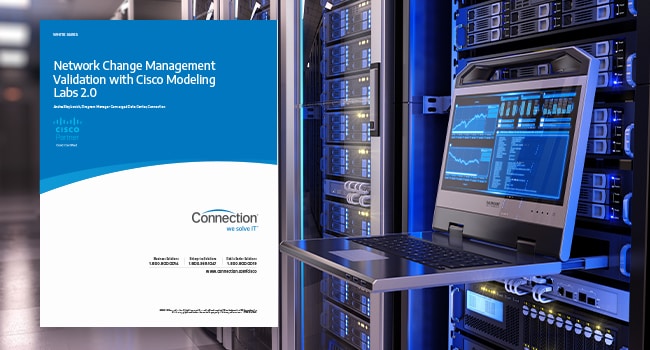

Securely Connect Your Hybrid Workforce
Cisco+ Secure Connect
Empower your hybrid workforce with powerful and easy-to-implement solutions. Cisco+ Secure Connect radically streamlines how organizations securely connect users, things, and applications.- Enable a secure, hybrid workforce with a single solution for secure access
- Increase worker productivity with connectivity anywhere and improved application performance
- Reduce security risk and maintain security compliance requirements
- Lower IT spend with a simple subscription model
Evolving Threats in the Hybrid Workplace
How will you manage threats found in the new hybrid workplace model and handle the intricacies of end-user support security, network visibility, and collaboration?Watch this roundtable discussion featuring subject matter experts from Connection, Dell, and Intel where we cover the topics that matter now more than ever:
- Workplace evolution for the new hybrid model
- Digital transformation requirements and benefits
- Threats and challenges such as hardware lifecycle, onboarding new employees, patching, updates, and maintenance

Keep Endpoints Secure from Anywhere
Dell Workforce Solutions
Dell Technologies understands that today’s security challenges include managing an evolving threat landscape with a modern work environment in mind. An effective endpoint security strategy must address the entire attack surface. That’s why Dell takes a comprehensive approach to securing devices above and below the operating system for optimal resilience and devices you can trust.Download our cybersecurity checklist to assess your cybersecurity readiness and how Dell keeps your business secure from anywhere.
Zero Trust Access
Remote work, the growth of BYOD, employee mobility, and the use of cloud-based applications are all on the rise, and perimeter-based security isn’t enough to protect your business in this new, hyper-distributed era. Zero Trust Access (ZTA) is the next-generation security approach that is made for the cloud era and will become the standard of tomorrow’s secure access.Hybrid Meeting Technology Resources
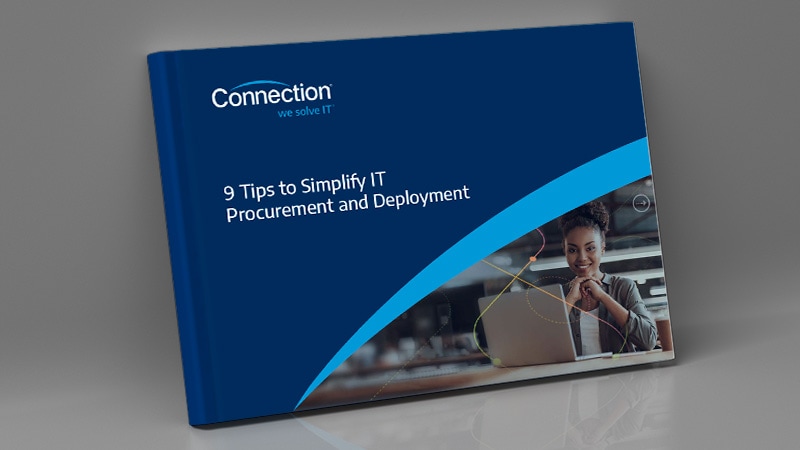
9 Tips to Simplify IT Procurement and Deployment
Workplace transformation has evolved as the remote and hybrid workspaces have become the norm. Discover a different way of thinking when it comes to choosing the right equipment for your remote or hybrid workforce. Download our eBook and explore the top challenges IT teams are currently faced with and strategies on how best to equip and support users—wherever they are.Microsoft Teams Rooms Solution
Empower Hybrid Collaboration Using Microsoft Teams
Microsoft Teams brings together everything a team needs: chat and threaded conversations, meetings and video conferencing, calling, content collaboration, and the ability to create and integrate apps and workflows that your organization relies on.Remove the barriers between spaces, places, and people. Teams Rooms can turn any room into an easy-to-use and inclusive meeting space where everyone can fully engage and participate, no matter where they are.
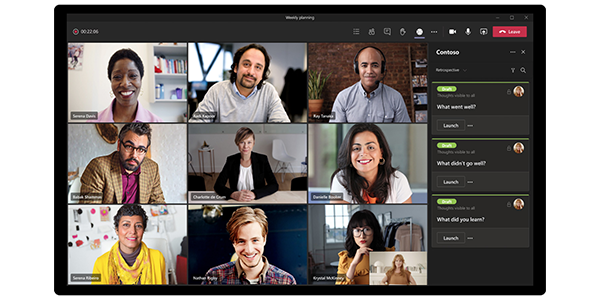
Monitor Buying Guide
What monitor features should be considered and prioritized to ensure optimal performance and user experience for hybrid meeting?
Printer Buying Guide
Are you looking for high quality printers to facilitate efficient document handling for both in-person or remote workforce?
Laptop Buying Guide
What are the key features and required specifications for laptops to ensure seamless collaboration for hybrid meeting?
Data Storage Buying Guide
Do you need additional data storage for securely storing, accessing, and sharing documents among in-person and remote participants?
Related Technology Resources
Conference Room Technology
Are you looking for the right technology to foster collaboration? Conference room technology plays an important role in hybrid meeting by providing the necessary infrastructure for seamless communication and productivity across diverse work environments.
Office Technology
Your teams can do anything with the right devices and technology investment. Check out our latest office technology resources and learn how the right office technology solutions can help you improve the productivity for hybrid workforce.
Cloud Technology
Cloud technology empowers organizations to embrace hybrid work models by providing the infrastructure needed to facilitate effective communication and collaboration. With connection, you’ll maximize the benefits of cloud technology and mitigate the risks.
Hybrid Meeting Technology Products
Was $2,750.00
Now
$2,400.00







